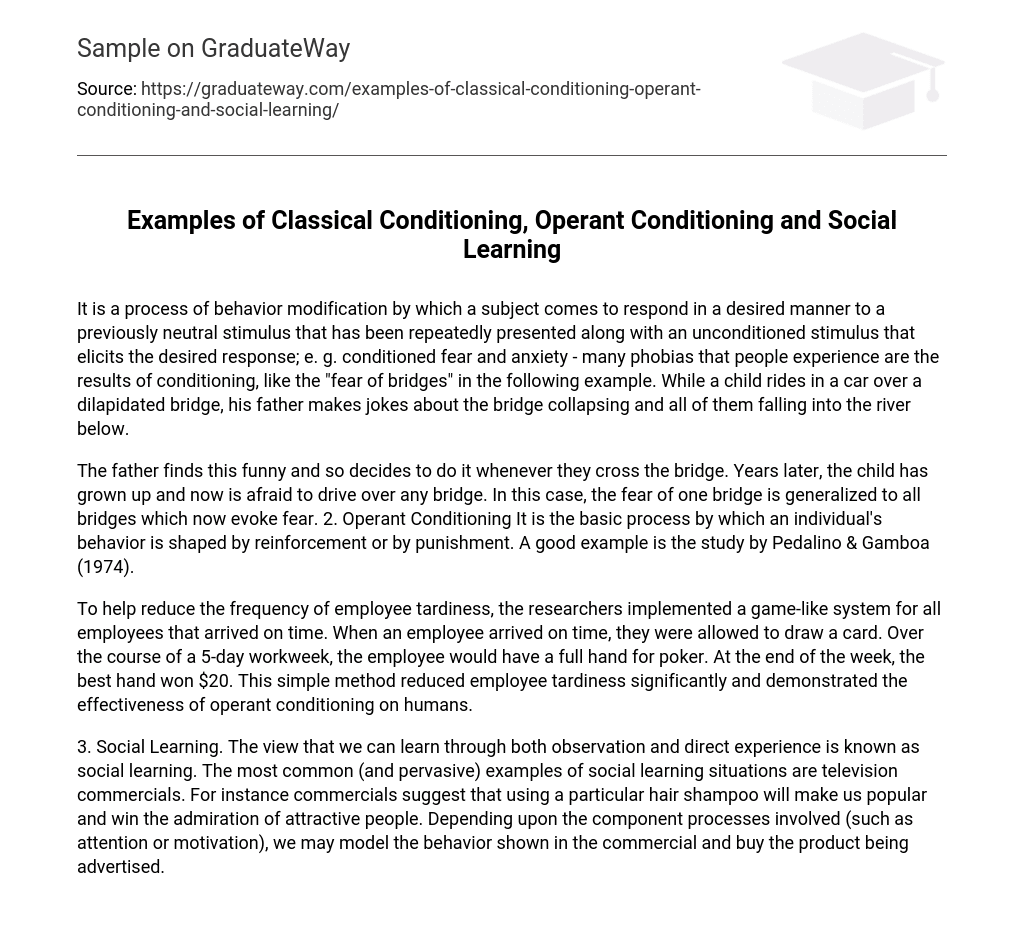Conditioning is a behavior modification process in which a subject learns to respond to a previously neutral stimulus in a desired way. This is achieved through repeatedly pairing the neutral stimulus with an unconditioned stimulus that elicits the desired response. For example, many phobias people experience are the result of conditioning, such as the “fear of bridges” mentioned below. A child riding in a car over a dilapidated bridge hears his father making jokes about the bridge collapsing and everyone falling into the river below.
The father finds it amusing and thus decides to repeat this action every time they cross the bridge. As time goes by, the child grows up and develops a fear of driving over any bridge. This fear generalizes to all bridges, causing them to evoke fear.
2. Operant Conditioning is the fundamental process through which an individual’s behavior is influenced by either reinforcement or punishment. Pedalino & Gamboa (1974) conducted a study that serves as a good example of this concept.
To decrease employee tardiness, researchers introduced a game-like mechanism for punctual employees. For each on-time arrival, an employee received a card. By the end of the workweek, they would have a full poker hand. The employee with the strongest hand won $20. This straightforward approach greatly decreased tardiness among employees and showcased the efficacy of operant conditioning on humans.
3. Social Learning is the belief that we can acquire knowledge through observation and direct experience. One prominent example of social learning is television commercials, which are prevalent in our society. These commercials often imply that using a specific hair shampoo will make us popular and gain the attention of attractive individuals. Our behavior may be influenced by various factors, including attention and motivation, as we observe and emulate the behavior exhibited in these advertisements by purchasing the promoted product.





